If you're learning Japanese, you have a lot to think about, including reading in the language.
Most people turn to textbooks and study sessions to improve their reading skills. But one of the most powerful tools at your disposal for learning any language is immersion!
As babies, humans are equipped to learn everything that they need to know about language by just…existing in it. It’s flying all around them, and they don’t necessarily understand everything that’s happening—and that works.
We don’t entirely lose that ability as we get older. So immersing yourself into the Japanese language is one of the most effective ways to absorb and retain new information. You’ll get to see it in active use, not isolated into a vocabulary list.
Knowing that, consider what role good Japanese books could have on your learning. From novels to manga, some books are better than others for those who are just starting out learning Japanese.
By the way, if you want to learn Japanese fast and have fun while doing it, my top recommendation is Japanese Uncovered which teaches you through StoryLearning®.
With Japanese Uncovered you’ll use my unique StoryLearning® method to learn Japanese naturally through story… not rules. It’s as fun as it is effective.
If you’re ready to get started, click here for a 7-day FREE trial.
I cover a bunch of tips and books in this post but if you're limited in time, you can also watch the video at the top of the page instead. Watch out: it has fewer books than this post!
Table of Contents
Learn With Japanese Books: Why Practice Reading?

One question that comes up among some learners is why bother to practice reading at all? That's what I used to wonder until I discovered the secret to learning languages through stories.
With everything from audiobooks to online news reports available nowadays, you may assume that you don’t need to extend yourself any further than learning basic hiragana and katakana to assist you in reading street signs and menus.
Why not just read an English translation of any book that interests you?
Well, the reason is manyfold. First, reading Japanese books exposes you to the language in its natural state. Few things can teach your brain the role and nuance of a word or phrase like seeing it in use.
Second, reading uses a part of the brain devoted to data processing. This area has already been refined for you in English or your native language. And you can develop it in Japanese, too.
As you begin to read in Japanese, you will need to pay careful attention to all the details of every word or kanji in order to glean meaning. As you progress, your brain will become accustomed to some of the most common features of Japanese.
And you will begin to read faster and with greater comprehension. This is when Japanese reading will become more pleasant—when you can begin to gloss over small details because they are familiar.
Cultivating this talent takes time but will make your Japanese skills all-around faster and more robust.
Top Reading Material In Japanese
The type of reading material that you select in Japanese will depend upon a variety of factors. For instance
- How much Japanese vocabulary do you already know?
- Can you read kanji?
- Do you want to read Japanese novels or non-fiction?
In general, consider a mixture of media. For example, books in Japanese that include pictures or manga, to help orient and contextualize what you are reading while you practice. Beginner Japanese books intended for a younger audience can help too.
Don’t forget that, especially as you just get started, reading only one or two pages can be enough! Set an achievable pace that won’t burn you out.
#1 神の子どもたちはみな踊る (After The Quake) by 村上春樹 (Haruki Murakami)
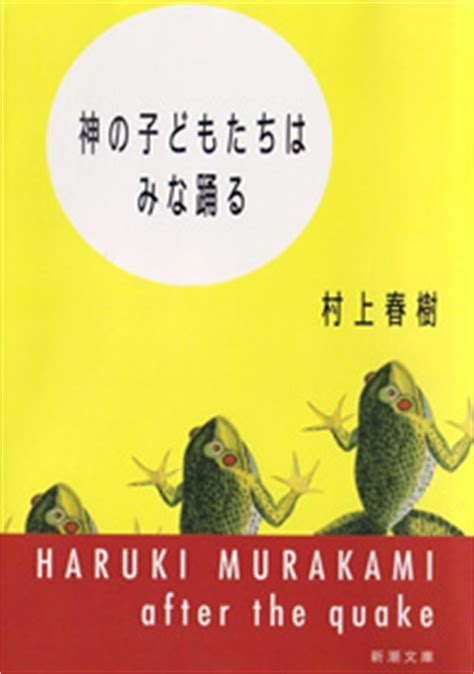
You may be familiar with this book by esteemed Japanese author Haruki Murakami under the English title After the Quake.
But it’s a steep departure from his more surreal texts. And a great place to delve into Japanese culture as a whole.
What makes this Haruki Murakami novel one of the best books to learn Japanese is that it has widely available English-translated printing.
If you examine the Japanese text and find that it’s too far out of reach right now, you can begin by reading the English version. This is still one of the most important pieces of modern Japanese fiction.
If you’d like to learn Japanese by reading the original version of the novel, especially because you have an interest in getting at least one Murakami book under your belt, this one is a good place to start.
It is much more accessible not only in its content but in its tone. While Murakami is notorious for creating dreamlike, disjointed narratives, this one is much more grounded in the day to day modern life of regular people and sports a colloquial tone.
A less surreal story makes for easier reading which is a win win for Japanese learners.
#2 キッチン (Kitchen) by 吉本ばなな (Banana Yoshimoto)
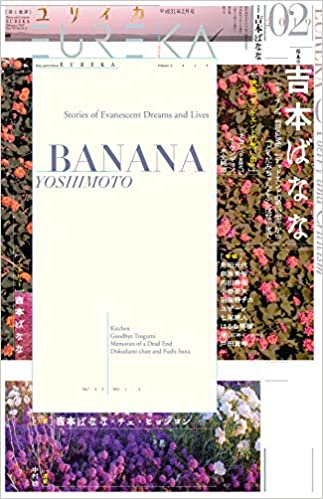
Another Japanese book that you can also find in English is Kitchen by Banana Yoshimoto, another of the very well-known Japanese writers.
Like After the Quake, you can begin by tackling the book in English to grasp the finer details of the plot, which focuses on a young woman’s life after her grandparents pass away.
Then, you can return to the original version and attempt some Japanese reading practice.
Like After the Quake, Kitchen is full of daily life vocabulary that makes it accessible to read in Japanese despite its status as a full-length Japanese novel.
Occasional complex vocabulary surrounding grief and psychology may appear. But the general tone of the book is an accessible look into the mind of an average person.
#3 魔女の宅急便 (Kiki's Delivery Service) by 角野 栄子 (Eiko Kadono)
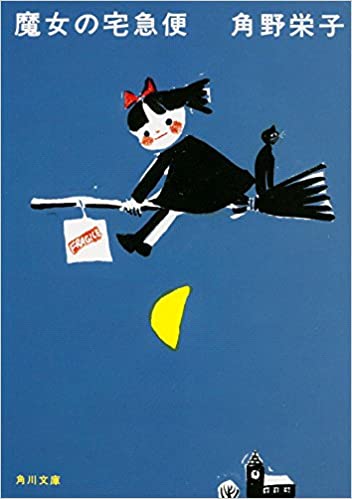
If you are finding that the previous two books—which are staples of modern Japanese writing—are too challenging in their Japanese form, consider a book that is geared more toward JLPT N4 and N3 learners: Kiki’s Delivery Service by Eiko Kadono.
What makes this book particularly appealing is that you may have already seen the Studio Ghibli adaptation of the story.
This makes it digestible and gives you an easy-to-understand reference when you get stuck. Which is great if you're looking for Japanese books for beginners.
Another benefit of Kiki’s Delivery Service is that it is remarkably simple to read. A combination of easy to understand words and dialogue spoken through the voice of a child (Kiki) create a type of text that is nuanced but accessible.
And the structure of the book itself lends to new readers as well. Each chapter serving as a sort of self-contained story within the overarching theme of Kiki’s life.
This means that you won't find yourself getting more and more lost as the story goes on and small details are missed. Each chapter almost stands on its own.
#4 よつばと (Yotsuba)
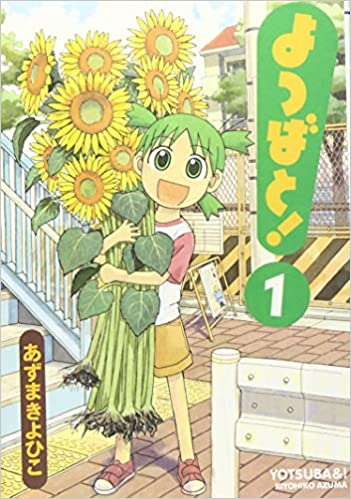
If you’re not ready to tackle books to learn Japanese just yet, manga and graded readers are a great option for easy Japanese reading.
Few manga come to mind as more suitable for early beginners than Yotsuba, which documents a child who experiences everyday problems and learns to solve them.
It is highly accessible in both its language and word choice, with plentiful hiragana and a wide range of printed issues to choose from.
Don’t be deceived by its seemingly childish topic; Yotsuba is one of the best manga for new readers to start with.
#5 しろくまカフェ (Shirokuma Café)
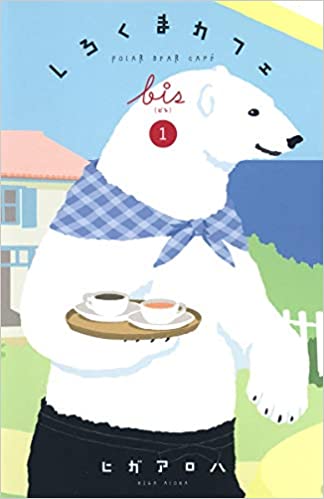
It’s almost impossible not to recommend Shirokuma Café, or Polar Bear Café, on a list of the best books for learning Japanese.
Imagine the type of easy, casual language that must be present in a manga about a polar bear who spends lazy days running his own café and chatting with his friends.
This unexpectedly but completely charming manga is extremely easy to get into, both story-wise and in terms of Japanese language skill.
And can serve as a springboard for diving into more complex Japanese novels for beginners later.
#6 Magic Treehouse
This series of children's books are a great way to start learning with Japanese books. The novels are translated from English to Japanese, which makes the language easier to understand and, what's more, the books are full of explainers.
Definitely one to check out if you want to start reading in Japanese.
#7 30-Day Mastery: Kanji & Adjectives And Adverbs
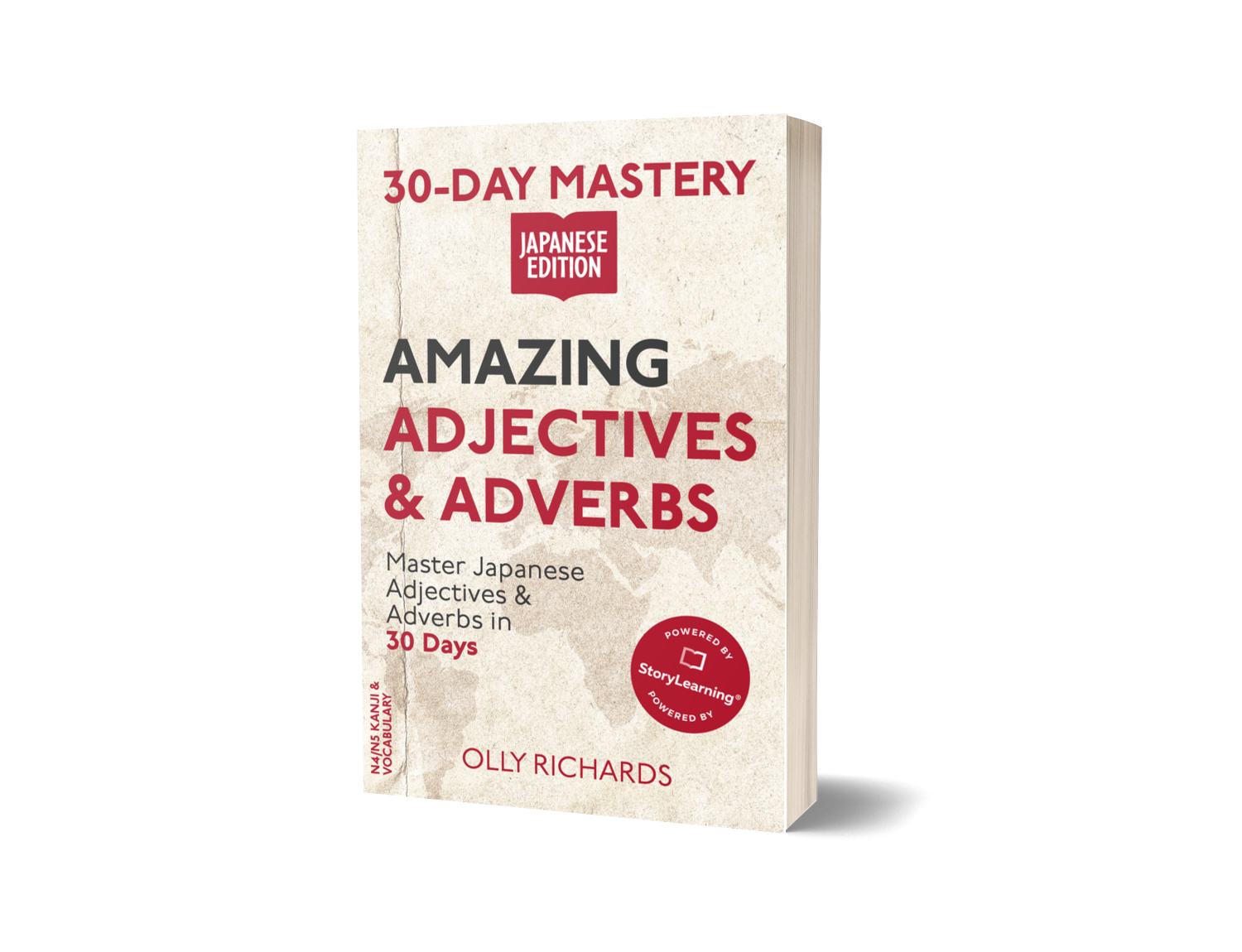
Native speakers don’t learn grammar with rules or kanji with flashcards, and neither should you.
This series helps you master difficult Japanese language points naturally through story, even if you’ve tried and failed in the past.
Try our innovative story-based method for 30 days, and you’ll be amazed as your brain develops a natural, instinctive understanding of the grammar.
At last, you’ll learn to think like a native and speak Japanese with confidence!
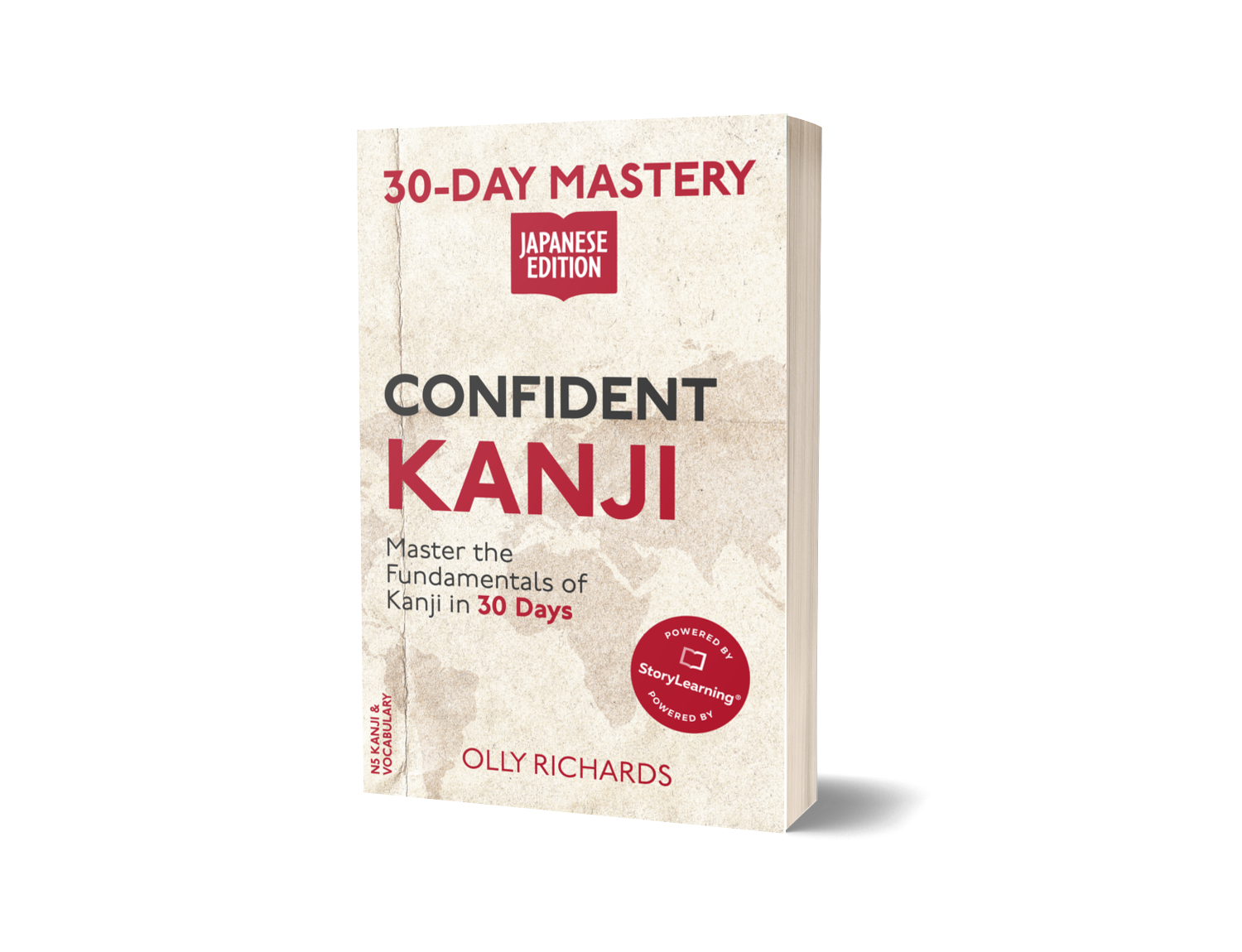
- Master Japanese naturally through story
- Short chapters of 300 words each – just read one chapter a day for 30 days!
- Includes furigana so you can quickly understand difficult kanji characters and hiragana transcriptions of difficult Kanji characters.
- Learn language concepts in context and at your level
- Quick-reference guide explains the key points so you can easily notice them in the story
- Short daily exercises to practice the grammar as you go
- Bilingual word lists to quickly look up new vocabulary
Find out more and get your copy here.
#8 Common Japanese Collocations
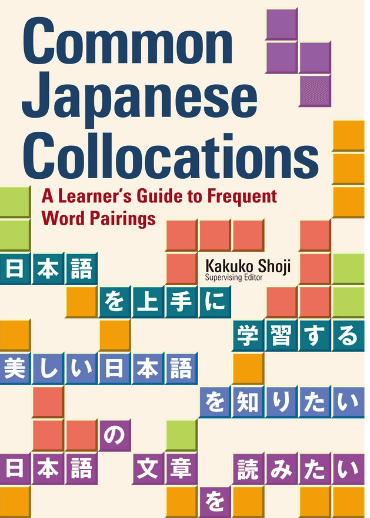
So you know a decent amount of Japanese vocabulary and grammar but are still making some awkward and clunky translations directly from your native language.
This is where you need Common Japanese Collocations, which teaches you about words that are always grouped together in Japanese.
It's the perfect book to help you boost your fluency, and it is helpfully divided into categories to make learning easier.
#9 Making Sense of Japanese
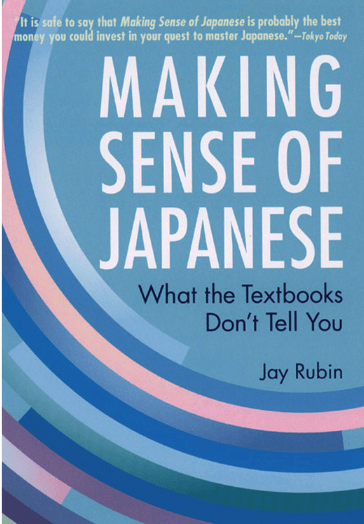
When you're trying to comprehend Japanese literature, you'll need some help with grammar structures, rules, and abnormalities in the language.
This book explains some of the most complex aspects of Japanese grammar.
The author uses everyday English to break down some of the most confusing elements of the language and explains how Japanese is a structured and not a vague language.
Reading this book will give you the tools to understand even the most complicated Japanese sentences.
So, what are you waiting for? Dive in so you can start understanding some of the excellent modern Japanese literature out there.
#10 Japanese Stories For Language Learners
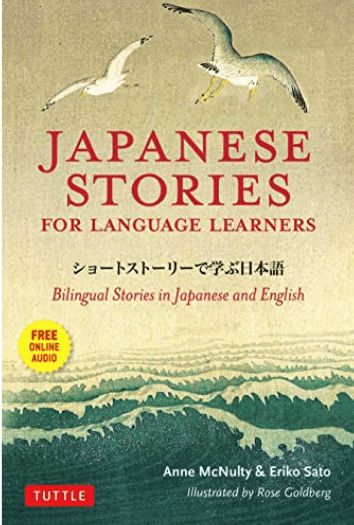
Before getting stuck into some modern Japanese literature, you may want to start with some stories that come with an English translation on the opposite page.
Reading in this way can help ease you into reading Japanese and extracting meaning from the text.
This book has 5 different short stories, all illustrated with Japanese art, which makes the book very visually pleasing. You also have grammar notes and vocabulary lists, making it much easier to understand the stories.
The book contains two famous Japanese folktales: Yuki Onna (Snow Woman) and Urashima Taro (Tale of a Fisherman). The other three stories are from 20th-century Japanese authors Arishima Takeo, Akutagawa Ryunosuke, Miyazawa Kenji.
With this book, you'll learn about Japanese history, modern Japan and its culture. The book comes with an audio recording so you can hear native speakers read the story. Great for practicing your Japanese pronunciation.
#11 Japanese Folktales For Language Learners
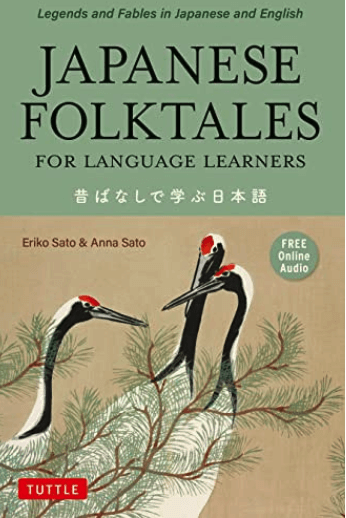
This book contains 22 classic Japanese stories. If you want to learn more about Japanese culture through reading, this is a great place to start.
While it may not be classic Japanese literature, it gives you a great insight into Japanese society.
The book makes the stories easy to follow thanks to the English translations on the opposite page. There are also exercises and notes to help you get to grips with the language you're reading.
The stories get gradually more difficult, so you can progress in your learning journey.
From Japanese ghost stories, to magical realism, and stories of rural Japan you won't get bored reading this book and will gain a lot of insight into some Japanese history and cultural phenomenons.
#12 Fluent Japanese From Anime & Manga

While it may not be traditional Japanese literature, using Anime and Manga is a great way to make learning Japanese more fun and contextual.
You may still be in the stage of watching anime with subtitles in English, but once you read this book, you will be able to progress quicker. Say bye to the subtitles on your favourite Japanese show!
This book outlines the steps you should take in order to use anime and manga to improve your Japanese skills. The systems the book teaches will change your learning game forever! Get one step closer to fluency by reading this book.
It teaches easy ways to remember words, phrases, and grammar structures, as well as how to learn kanji. Once you read this book, you'll never approach reading in Japanese or watching Japanese shows on Netflix and movies in the same way again!
Tip: Try reading books In Japanese you already know
If you get through all the books on this list, why not give the Japanese version of a book you know and love a try? When you know the story already, it can make it much easier to concentrate on the language itself, rather than the meaning.
Why not check out the Japanese version of your favourite literary fiction like Harry Potter, for example?
Should You Use Furigana Or Not When You Read Japanese Books?

Yes, the age-old question: if you’re going to read real Japanese, should you read text that has furigana? Furigana, the small hiragana that appear above kanji, assists you with how to read the kanji.
Some people find them helpful, while others view them as a crutch that prevents you from ever needing to learn the readings of kanji from memory.
Especially when you are just starting out, consider taking advantage of furigana to become familiar with words and practice your hiragana reading. As you advance from easy Japanese books, you can graduate into texts that use less furigana.
However, many classic Japanese novels will still rely on furigana from time to time as uncommon words are introduced; using furigana is nothing to be ashamed of.
Japanese Books FAQ
What is Japan's most famous book?
One of Japan’s most famous books is The Tale of Genji by Murasaki Shikibu, often considered the world’s first novel. It’s a classic of Japanese literature that offers deep insights into Heian-era court life.
What is the best piece of Japanese literature?
Many consider The Tale of Genji the greatest classic, but modern masterpieces like Haruki Murakami’s Norwegian Wood and Yasunari Kawabata’s Snow Country are also widely praised.
The best depends on your interest—historical, contemporary, or philosophical works.
Which Japanese book should I read?
For beginners in Japanese literature, try Haruki Murakami’s Kafka on the Shore for magical realism, Natsume Sōseki’sKokoro for classic introspection, or Banana Yoshimoto’s Kitchen for contemporary fiction.
If you enjoy crime, The Devotion of Suspect X by Keigo Higashino is a great choice.
What are Japanese books called?
Books in Japanese are generally called 本 (hon). More specifically, 小説 (shōsetsu) refers to novels, 漫画 (manga) to comics, and 文庫本 (bunkobon) to paperback books.
Learn With Japanese Books: Wrapping Up

As you consider the best Japanese books to read, remember that you can only learn so much from a textbook.
Embrace immersion, even when it may seem overwhelming, and keep reading at a pace that works for you. You don’t need to read an entire Japanese novel in a weekend—or even a month.
Take advantage of manga and graded readers to ease your way into more advanced Japanese books and classic Japanese literature.
Whether you dive straight into some short stories with English translations or go straight for a novel by Haruki Murakami, the most important thing is that you like the subject.
If you're reading about something that interests you, it is much more likely you will retain the information in the book.
The biggest hurdle is getting started! Just start and you’ll be reading Japanese quickly and effortlessly in no time!

Olly Richards
Creator of the StoryLearning® Method
Olly Richards is a renowned polyglot and language learning expert with over 15 years of experience teaching millions through his innovative StoryLearning® method. He is the creator of StoryLearning, one of the world's largest language learning blogs with 500,000+ monthly readers.
Olly has authored 30+ language learning books and courses, including the bestselling "Short Stories" series published by Teach Yourself.
When not developing new teaching methods, Richards practices what he preaches—he speaks 8 languages fluently and continues learning new ones through his own methodology.









































